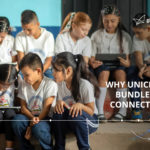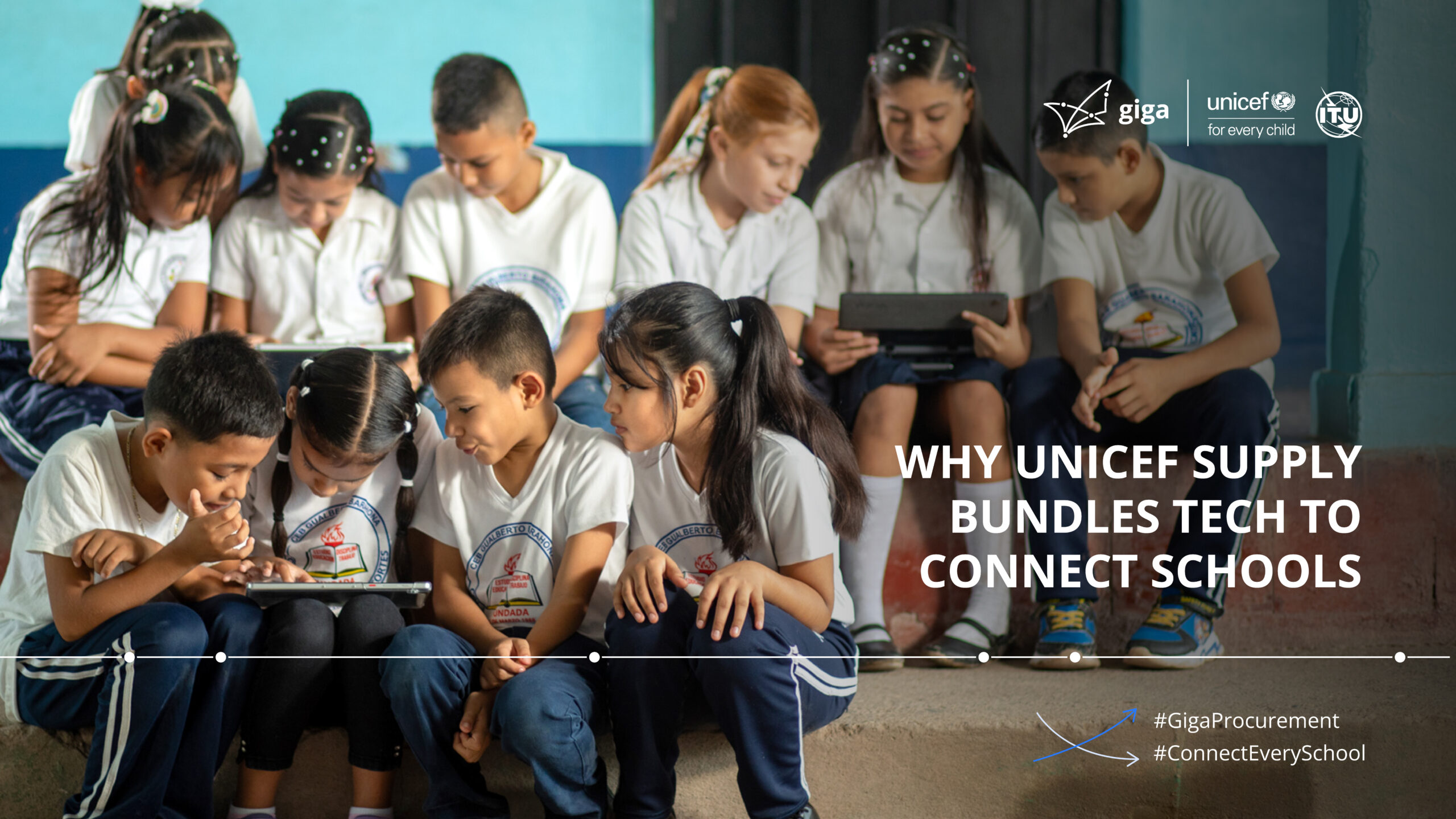To connect every school to the internet, Giga supports technologic agnostic bidding processes which are open to all companies and consortia. This helps the procurement process to deliver cost-effective, scalable solutions even in the remotest areas.
By pooling government, school and medical facility demand as well as bundling different technologies into a single procurement package, Giga helps to drop the price of school connectivity. Here are some of the technologies used:
- Solar Power – Bundling solar with connectivity tackles one of the biggest barriers to internet access—reliable power—ensuring schools have both consistent connectivity and charged devices to use it.
- Satellite Connectivity – Reaches isolated schools beyond terrestrial networks. The rise of Low Earth Orbit (LEO) constellations makes satellite internet faster, cheaper, and ideal for remote schools. As a global service, satellite connectivity can be procured at scale across countries for better pricing.
- Fiber-Optic Backbone – Capital-intensive to install, fiber networks benefit from National road, rail, and power projects, expanding reach. Bundling demand across schools and medical facilities, combined with long-term agreements, strengthens the business case for fiber investment in the last-mile, delivering long-term value as bandwidth needs grow.
- Fixed Wireless Access (FWA) – Fixed Wireless Access (FWA) delivers affordable, scalable broadband using 3G/4G/5G or point-to-point radio. Rapid to deploy in tower coverage areas, it connects many schools quickly.
- Smart Routers and Edge Devices – These improve school internet performance by using local caching, filtering, and monitoring. They reduce data usage, protect students online, and ensure that connectivity is stable and trackable.
- Cyber security: Bundling cybersecurity services across schools ensures consistent protection, lowers costs, simplifies management, and enables faster deployment with ongoing updates and support.
By combining technologies and bundling demand across schools and services, the procurement process attracts more bidders, including non-traditional providers, simplifies implementation for governments, unlocks economies of scale, and reduces connectivity costs. This holistic approach improves quality of service and online learning outcomes by ensuring secure power, stronger cybersecurity, clear service-level agreements, and centralized contract management.

